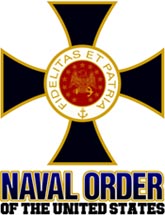Wales/Cymru
Wales/Cymru: ° Aberdyfi ° Aberystwyth ° Bangor (Gwynedd) ° Borth (Ceredigion) ° Cardiff, Pontypridd, Swansea (Glamorgan) ° Holyhead (Anglesey) ° Fishguard, Milford Haven, Pembroke (Pembrokshire) ° Porthmadog (Eifionydd) ° The Welsh Language ° The Mandans and Owain of Wales
Borth
In July 2014 storms unearthed ancient pine, alder, oak and birch from a 5,000-year-old forest as a Welsh beach near Borth was washed away.
The ancient forest was covered in peat before eventually being swallowed by the sea. Legends say trees and nearby township were flooded after a priestess named Mererid neglected a magical well, which overflowed. Conditions inside the peat, devoid of oxygen and slightly alkaline, have meant the stumps survived and were uncovered by a set of storms which washed away the peat layer. A walkway made of sticks and branches was also discovered. It is 3,000 to 4,000 years old and was built, it is believed, to cope with rising sea levels ages ago. Following dramatic storms around Borth, something ancient is discovered. An ichthyosaur skeleton was discovered on the Jurassic Coast of Dorset and East Devon. At Happisburgh, Norfolk, footprints discovered in storm-exposed rocks are believed to be the earliest evidence of humans outside Africa, dating back 850,000 years.
In ancient texts it was called Porth Gwyddno after Gwyddno Garanhir, circa 580 a.d. The village is named Porth Gwyddno in a praise poem to Prince Rhys Gryg by the poet Ffylip Brydydd at the beginning of the 13th century. Llandre Church records note that tithes were taken from fishing boats moored at Borth and Aberleri in 1373. In 1565 Borth is mentioned in the Piracy Commissions which were surveys of the state of shipping on the western fringes of Britain. Fourteen fishermen and mariners were listed at Borth in an anonymous survey of 1678. By 1750 there were growing numbers of seafarers evident in the grave lists of Llandre Church. In 1746 a Portuguese vessel was wrecked at Trwyn Pellaf. Borth salvagers made a deposition to the Gogerddan Estate for remuneration for providing a quantity of that ships cargo. Lewis Morris s 1748 maritime survey of the Welsh coast mentions Borth in connection with the herring fishery. Borth is clearly marked on Murdoch McKenzie s marine chart of 1775.
Village history reveals a resourceful people, living in unimaginable poverty in tiny crowded cottages, built precariously on an exposed coastal shingle bank, flanked on one side by a gale lashed storm beach, and on the other the marshland of Cors Fochno. Contact with the outside world came once a week in the form of the Shipping Gazette, which was bought across the estuary from Aberdyfi by boat.
They sailed the worlds oceans to far-flung ports:
- Captain William Hughes b.1842, who sailed the brig Fanny Fothergill to Australian waters in the 1870 s.
- Hugh James b.1844 sailed the barques Hawarden Castle and the Carmarthen Castle around the world to ports on the west coast of America, the Orient and South Africa.
- Captain Lewis Williams voyaged round Cape Horn a dozen times on his way to Wellington, New Zealand and Melbourne, Australia.
- Captain T. C. Enos knew the ports of the east and west coasts of America like the back of his hand, especially those of Peru and Chile, as he had spent years in the Peruvian Navy.
- Captain John Williams b.1836 sailed the small 588 ton barque Glendovey, owned by fellow villager William James, all over the world for forty years up to 1900.
For centuries, the village had been dependant on herring. The fish was so important to the economy of Ceredigion that it appears on the county s coat of arms. In 1898, in an October edition of the Cambrian News, it was reported that Borth people would have to suffer a dire winter because of the lack of herrings in the bay. D. W. Morgan, the first Aberdyfi maritime historian of Borth descent, described the tough fisherfolk of Borth as men who worked in this way for a bare sustenance, buying bread for their families, with their lives often, developed qualities of courage, piety, resourcefulness and thrift hardly to be met with under gentler conditions. Like the marram grass, the plant most familiar to them on the exposed foreshore, they adapted themselves, had to adapt themselves, in order to live."
In 1872, the schooner Merton of Truro was voyaging from Falmouth to Runcorn with a cargo of china clay when she was driven towards Trywn Pellaf in a southwesterly gale. Before the Aberystwyth lifeboat Evelyn Wood came on to the scene, a fishing boat put out from Borth with five men on board; Captains John Hughes, Richard Davies, William Edwards as well as fishermen John Jones and John Jenkins. They rowed through the huge seas and managed to get aboard the schooner. Knowing the local conditions, they would have been able to help her sail out of difficulty, but unfortunately there was no means of safely snapping the anchor cable that was holding her away from the rocks. With the incoming tide, she dragged her anchor and luckily grounded on sand near Trywn Cyntaf.
A day later, with seas becoming calmer, she was towed away by a Porthmadoc steam tug. The Borth boat, with the five men on board, capsized on returning to shore, fortunately with no loss of life. Friends and the wives of the boatmen who had previously pleaded with them not to be so foolhardy as to risk their lives in those conditions, were at hand to help them in the time honoured way.
June 19, 1894, San Francisco Call, San Francisco, California
LORDS IN ARMS.
Fighting to Preserve the Established Church in Wales.
London, June 18. A meeting of members of the nobility was held to-day, at which the Duke of Westminster presided. A committee was formed to conduct the campaign against the Government's proposal to disestablish the church in Wales. It was agreed to contest every constituency in Wales in the general election. The Duke of Westminster subscribed 1000 toward the expenses of the campaign, while other lords subscribed 500 each. A total of 5000 was raised.
 |
| Wrecked off the Mumbles |
The Maritime Heritage Project began in honor of Captain James H. Blethen, a Welsh sea captain whose family had migrated from Wales to Maine on the East Coast of the United States in the early-1700s.
Captain Blethen, raised on North America's Eastcoast in in Maine, went to sea in 1829 at age 15 and spent 44 years aboard ships sailing from New York to European ports, then between San Francisco and San Juan del Sur, Nicaragua (bringing gold seekers to San Francisco where they headed for Northern California's mines), and on a troop ship along the coastline of America's Southern States during the Civil War. He closed his career by opening the mail lines between Hawaii and Australia/New Zealand for Webb Mail Lines.
1899. World's Fleet. Boston Daily Globe
Lloyds Register of Shipping gives the entire fleet of the world as 28,180 steamers and sailing vessels, with a total tonnage of 27,673,628, of which 39 perent are British.
| Great Britain | 10,990 vessels, total tonnage of 10,792,714 |
| United States | 3,010 vessels, total tonnage of 2,405,887 |
| Norway | 2,528 vessels, tonnage of 1,604,230 |
| Germany | 1,676 vessels, with a tonnage of 2,453,334, in which are included her particularly large ships. |
| Sweden | 1,408 vessels with a tonnage of 643, 527 |
| Italy | 1,150 vessels |
| France | 1,182 vessels |
For Historical Comparison
Top 10 Maritime Nations Ranked by Value (2017)
| Country | # of Vessels | Gross Tonnage (m) |
Total Value (USDbn) |
|
|---|---|---|---|---|
| 1 | Greece | 4,453 | 206.47 | $88.0 |
| 2 | Japan | 4,317 | 150.26 | $79.8 |
| 3 | China | 4,938 | 159.71 | $71.7 |
| 4 | USA | 2,399 | 55.92 | $46.5 |
| 5 | Singapore | 2,662 | 64.03 | $41.7 |
| 6 | Norway | 1,668 | 39.68 | $41.1 |
| 7 | Germany | 2,923 | 81.17 | $30.3 |
| 8 | UK | 883 | 28.78 | $24.3 |
| 9 | Denmark | 1,040 | 36.17 | $23.4 |
| 10 | South Korea | 1,484 | 49.88 | $20.1 |
| Total | 26,767 | 87.21 | $466.9 | |














 Copyright ~ 1998-2018.
Copyright ~ 1998-2018. 